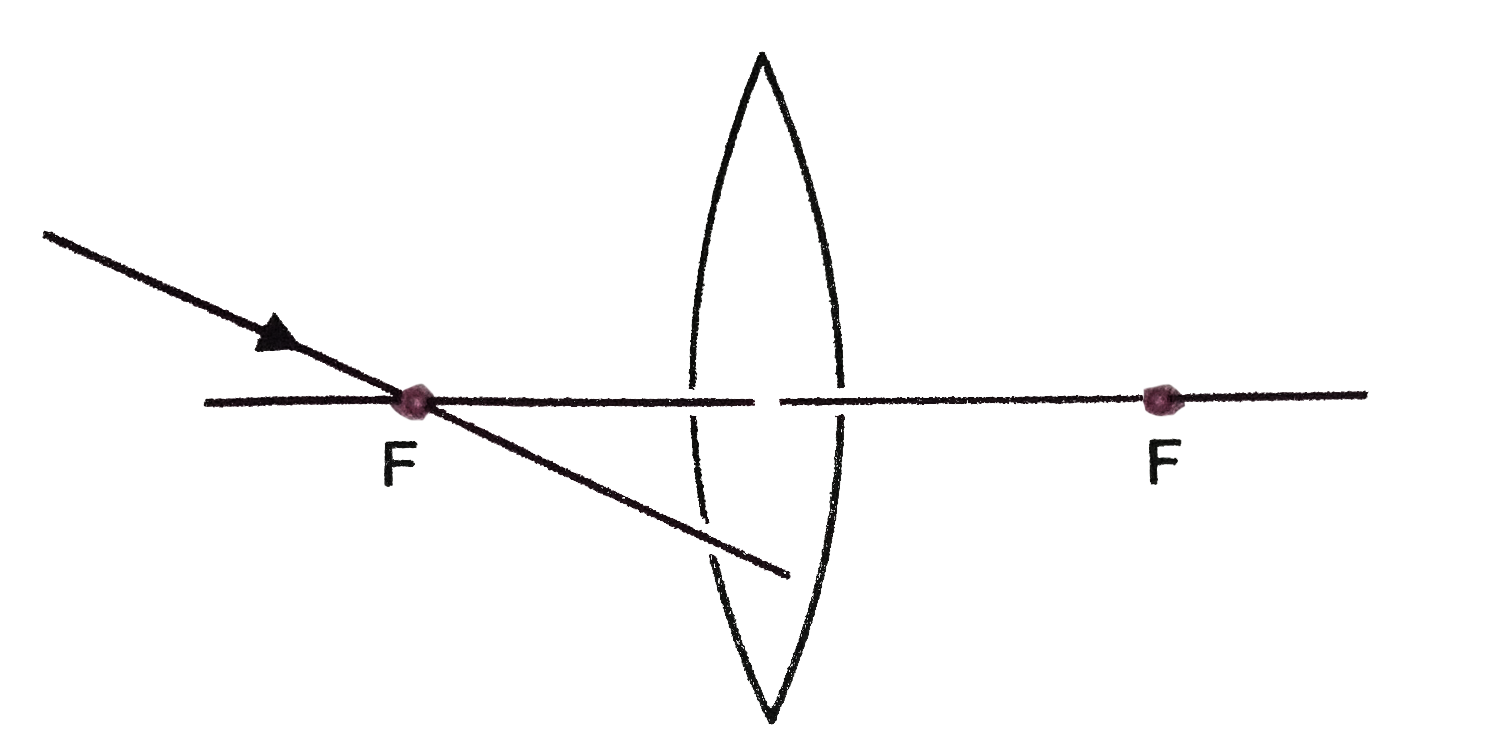When does a ray of light falling on a lens pass through it undeviated ?
If a ray of light is parallel to the principal axis of convex lens, when passes through the optical centre, then the ray coming out from the lens will be undeviated.
Topper's Solved these Questions
- BOOK - ICSECHAPTER - SELF ASSESSMENT PAPER -3EXERCISE - SECTION-B42videos
SELF ASSESSMENT PAPER -3
- BOOK - ICSECHAPTER - SELF ASSESSMENT PAPER -3EXERCISE - SECTION .B.37videos
SELF ASSESSMENT PAPER -3
- BOOK - ICSECHAPTER - SELF ASSESSMENT PAPER -2EXERCISE - SECTION .B.37videos
SELF ASSESSMENT PAPER -2
- BOOK - ICSECHAPTER - SELF ASSESSMENT PAPER -5EXERCISE - SECTION-B35videos
SELF ASSESSMENT PAPER -5
Similar Questions
A ray of light is falling on a glass sphere of μ=√3 such that the incident ray and the emergent ray, when produced, intersect at a point on the surface of the sphere. Find the value of angle of incidence.
View SolutionA converging lens L1 of focal length 20 cm is separated by 8 cm from a diverging lens L2 of focal length 30cm. A parallel beam of light falls on L1 after passing through L2 is focussed at point P. Calculate V.
 View Solution
View SolutionWhen a ray of light falls normally on a plane mirror. The angle of incidence will be
View SolutionWhat is lateral displacement ? Draw a ray diagram showing the lateral displacement of a ray of light when it passes through a parallel sides glass slab.
View SolutionIf a ray of light is allowed to pass through a quartz crystal, then the two refracted rays obtained are
View SolutionWhen a strong beam of light is passed through a colloidal solution, the light will:
View SolutionDraw a neat and labelled diagram, when a ray of white light passes through an equilateral prism.
View SolutionWhich of the following solar radiations pass through the atmosphere of earth ?
X-rays, ultraviolet rays, visible light rays, infrared radiation.View SolutionThe angle of a prism is 60∘ and its refractive index is √2. The angle of minumum deviation sufferred by a ray of light in passing through it is
View SolutionWhich of the following ray diagrams is correct for the ray of light incident on a lens shown in Fig. ? Choices are given in Fig.
 View Solution
View Solution

